Habitat loss, car strikes and rodenticides: Australia’s owls are under pressure
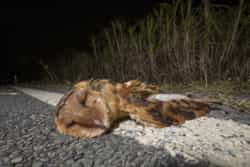
AS THE DESCENDING sun signals the end of the day, a small group of birds awake from their slumber, ready to take to our skies in search of food.
From our urban backyards to the arid centre and lush rainforests, owls can be found in almost any environment.
Their nocturnal habits often leave the general public unaware of their presence, and in turn, the battles that our owls are fighting on a daily basis.
Perhaps this is why every spare moment I have is dedicated to learning more about our Australian owls.
Countless hours are spent looking for owls, monitoring behaviours and breeding successes, and uncovering areas where owls have not been previously known to inhabit.
When I come across dead owls, it leaves me with an empty feeling. Was there anything I could have done to help this individual? Is there anything we as a nation can do to help?
I began photographing dead owls to help highlight the issues our nocturnal apex predators face. I believe the images are an integral part in sharing key conversation messages.
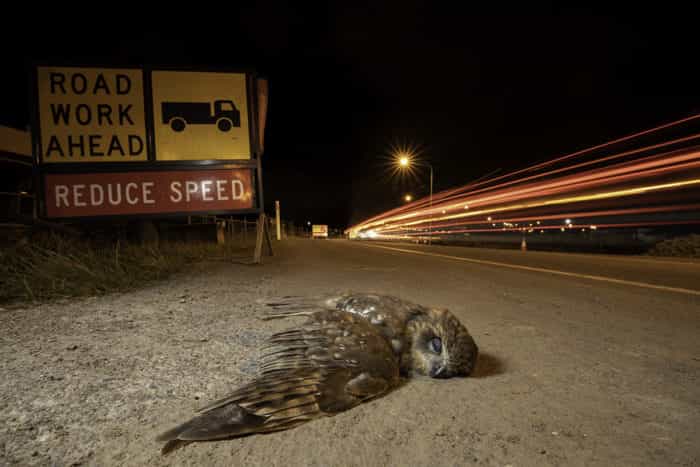
Fragmentation of habitat often puts our wildlife at risk of encounters with vehicles. (Image credit: Matt Wright)
Habitat loss
One of the biggest threats to Australia’s owls is the loss of habitat and hollow-bearing trees.
Australia is one of the world’s worst offenders when it comes to land clearing, with a projected 3 million hectares of untouched forest to be lost by 2030.
Our land-clearing crisis is primarily linked with the agricultural and livestock industries; however it’s worsened by various state and federal governments’ inaction on current and pending land-clearing policies.
With the loss of habitat comes the loss of precious old-growth, hollow-bearing trees, in which 10 of our 11 owl species rely on for breeding.
Suitable hollow-bearing trees, which are hundreds of years old, are disappearing from the landscape, leaving our owls with fewer options for nesting.
These natural hollows cannot always be supplemented with artificial nest boxes, with species such as the powerful owl (Australia’s largest owl) having only a single record of nest-box occupation, despite great efforts to replicate what these old-growth trees provide.
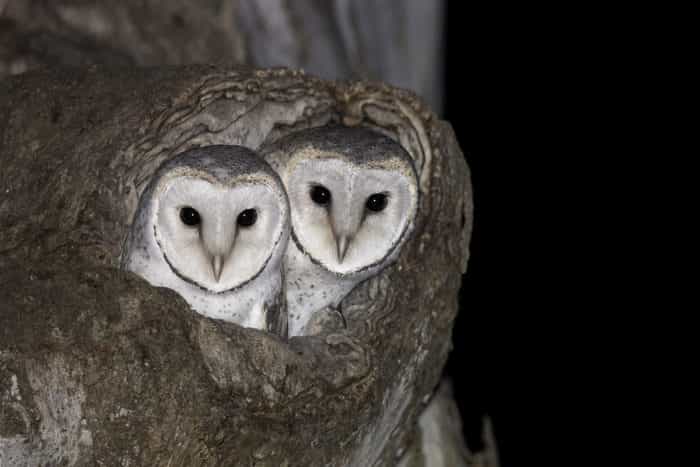
Owls need mature trees that form hollows in order to breed. (Image credit: Matt Wright)
Vehicle strike
Land clearing means the owls have to navigate a highly fragmented landscape, with their habitat being separated by many busy roads. This results in another major threat to our owls – vehicle strike.
Whether they are picking up prey off the roads, or just travelling through their territory, all of Australia’s owls are vulnerable to vehicle strike.
Species such as the powerful owl have adapted to life in the city where they can take advantage of abundant urban prey items, such as ringtail possums and flying foxes. However, there is a price to pay when you’re an owl living in the big city, with vehicle strike being the main cause of mortality in powerful owls.
Boom and bust species, such as the eastern barn owl and eastern grass owl, often fall victim to vehicle strike once they disperse in search of food when local prey populations begin to thin out.
Winter 2018 saw large numbers of eastern barn owls moving towards the east coast in search of food. As a result of this, there was in increase in vehicle-strike victims being found across the eastern states. Some attribute the large influx of birds to drought conditions throughout inland Australia.
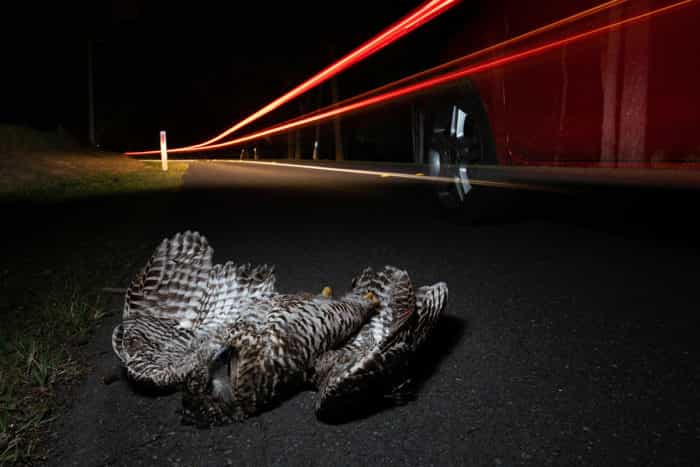
Powerful owls have high rates of mortality due to vehicle strike. (Image credit: Matt Wright)
Rodenticides
Fast becoming one of the biggest killers of owl species across the world is the use of rodenticides, colloquially rat poison, both commercially and privately.Rodents make up a high percentage of the diet of a number of Australian owl species, such as the eastern barn owl, eastern grass owl, and Australian boobook, all of which have been heavily impacted by the use of rodenticides.
From farms and factories, to inner-city restaurants, and even the average household, rodenticides are commonly used in a number of settings in an effort to control rodent numbers.
Rodents ingest this poison, and it is then passed through the food chain to their natural predators, such as owls.
There are two main types of rodenticides, first generation and second generation. Both of these have the same action of preventing the rodents’ blood from clotting by inhibiting vitamin K. However, the second generation type rodenticides work slowly, and the rodents continue to eat them after they have ingested a lethal dose.
This makes them more deadly to predators such as owls, as the rodent would have ingested multiple times the lethal dose.A recent study in Western Australia detected severe and often lethal exposure of Australian boobooks to anticoagulant rodenticides.
Around 70 per cent of the 73 birds tested had measurable levels of rodenticides, and 18 per cent of these birds had lethal levels.
Most of the rodenticides detected were the slower-acting second-generation types, which have been restricted to licensed pest controllers in the US and Canada, but are readily available to the general public in Australia.
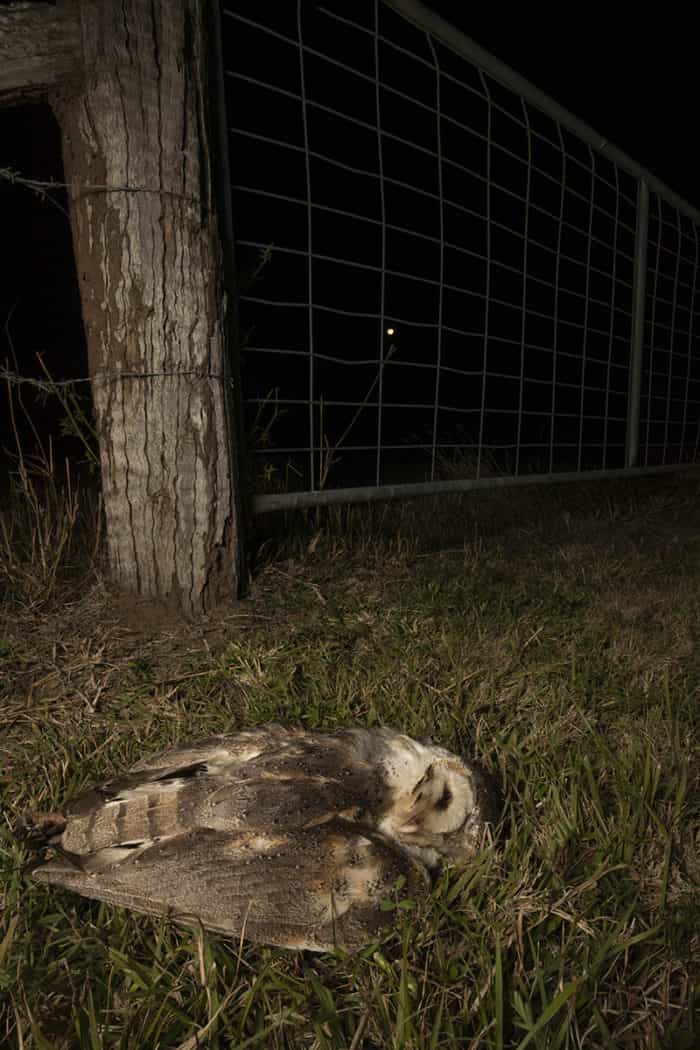
Drought conditions are bringing in large numbers of birds towards the coast in search of food with specimens often found emaciated. (Image credit: Matt Wright)
What you can do to help:
- Record your owl sightings on databases such as eBird, Birdata or the Atlas of Living Australia. This provides various groups and organisations with valuable data, which helps to conserve and protect these species.
- Reduce or eliminate the use of rodenticides in favour of safer (non-chemical based) methods, such as single- or multi-entrance traps. However, if rodenticides need to be used, avoid the use of second-generation poisons and stick to ones that contain warfarin, coumatetralyl or cholecalciferol. These break down faster and are less likely to kill non-target animals, such as owls.
- Be wildlife wise while driving at night. Stick to speed limits as it greatly reduces the risk of injuring wildlife.
- Get involved in local citizen science projects such as BirdLife Australia’s Powerful Owl Project.

